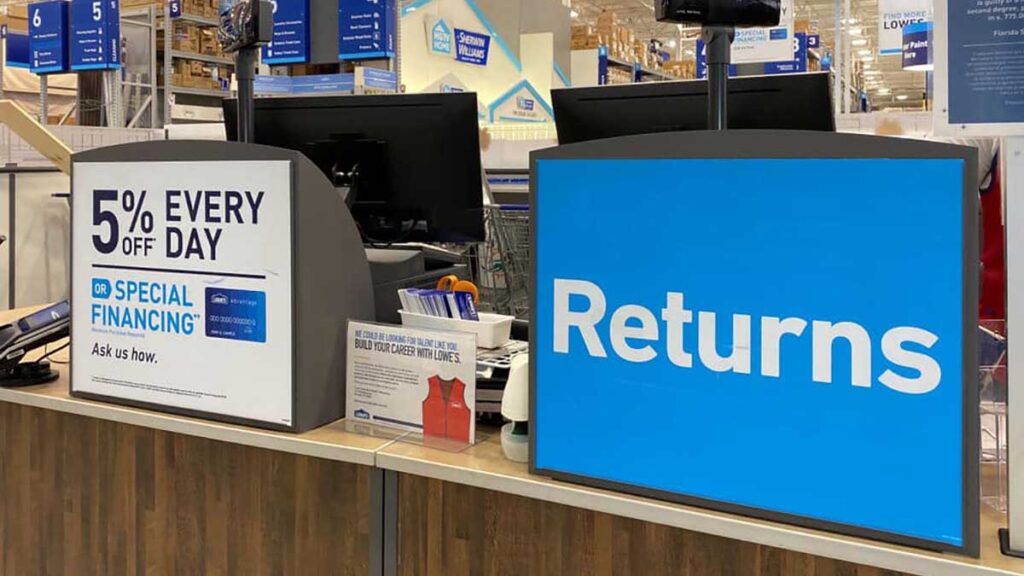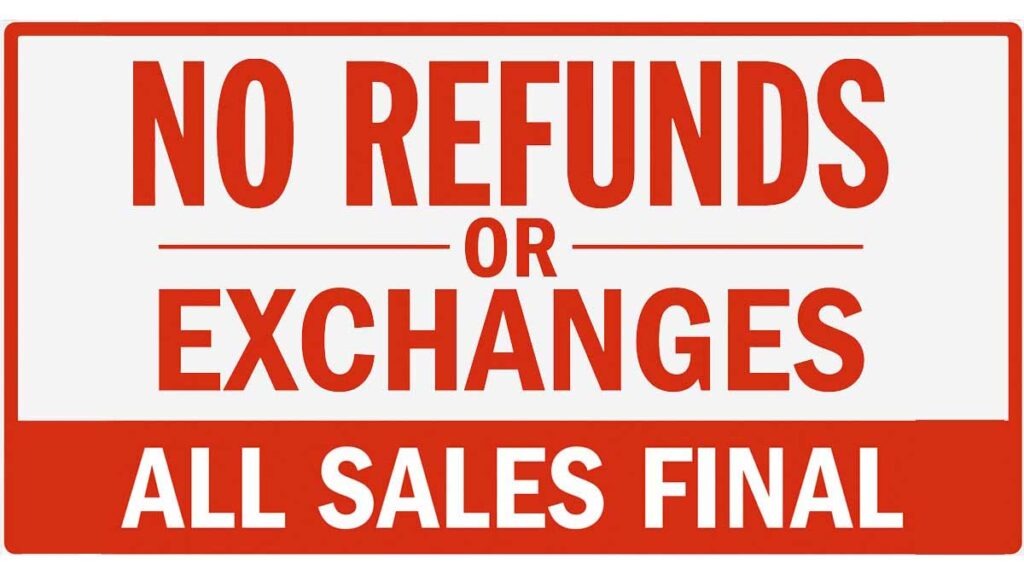In this comprehensive guide, you will find valuable information on how to prevent return fraud. Return fraud is a growing concern for businesses of all sizes, and it can have a significant impact on their bottom line. Whether you are a small business owner or a customer looking to protect yourself, this guide will provide you with practical tips and strategies to identify and prevent return fraud. From understanding the common types of return fraud to implementing effective prevention measures, this guide is your go-to resource for combating this problem. So, let’s delve into the world of return fraud prevention and ensure that your returns are legit, your business stays profitable, and your customers remain satisfied.
Types of Return Fraud
Return fraud is a growing concern for retailers, and understanding the different types of return fraud is crucial in preventing losses. By familiarizing yourself with the various types of return fraud, you can better protect your business.
Wardrobing
One common type of return fraud is wardrobing, which involves customers purchasing items with the intention of using them once and then returning them. This is particularly prevalent in the fashion industry, where customers may buy an outfit for a special occasion and then return it after wearing it. Wardrobing not only results in financial losses for retailers but also compromises the integrity of the products being returned.
Switching
Another type of return fraud is switching, where customers replace an item they already purchased with a similar, but less valuable or defective, product and then return it for a refund. For example, a customer may switch the higher-end electronics they purchased with a damaged or counterfeit version and return it claiming the item was defective.
Counterfeit Returns
Counterfeit returns occur when customers return counterfeit or fake products instead of the genuine ones they originally purchased. In some cases, return fraudsters may deliberately purchase a genuine item and replace it with a counterfeit one before returning it for a refund. Retailers need to be vigilant in verifying the authenticity of returned products to prevent losses from counterfeit returns.
Stolen Merchandise Returns
Stolen merchandise returns involve individuals who have stolen products and attempt to return them to the retailer for cash or store credit. This form of return fraud not only results in financial losses for the retailer but also encourages criminal activity. Retailers should implement strict return policies and train their employees to identify signs of stolen merchandise returns.
Signs of Return Fraud
While it is essential to be aware of the different types of return fraud, recognizing the signs of return fraud is equally important. By being vigilant and observing certain indicators, you can identify potential fraudulent returns and take appropriate action to prevent losses.
Excessive returns from a single customer
One sign of return fraud is excessive returns from a single customer. If a customer consistently returns a high volume of merchandise or frequently returns items shortly after purchase, it may indicate fraudulent behavior. Retailers should track customer return patterns and implement policies that address excessive returns.
Lack of original packaging or accessories
Another red flag for return fraud is the absence of original packaging or missing accessories. When customers return items without the necessary packaging or with missing components, it may suggest that they are attempting to return a different item or a counterfeit product. Retailers should thoroughly inspect returned items to ensure they match the original purchase.
Unusual return patterns
Unusual return patterns can be indicative of return fraud. This includes returning products outside of the specified return period, repeatedly returning items without valid reasons, or consistently returning products from different store locations. By monitoring return patterns, retailers can identify potential fraudulent activity and take appropriate measures.
Inconsistent or mismatched serial numbers
Inconsistent or mismatched serial numbers on returned products can also be a sign of return fraud. Fraudsters may tamper with or remove serial numbers to hide the fact that they are returning a different item. Retailers should validate serial numbers and ensure they match the original purchase to prevent losses from fraudulent returns.
Preventing Return Fraud
Preventing return fraud requires proactive measures and the implementation of effective policies. By taking preventative steps, retailers can minimize their risk of falling victim to return fraud.
Implementing strict return policies
One of the most effective ways to prevent return fraud is by implementing strict return policies. Clearly communicate your policies to customers and ensure they understand the requirements for returns. By setting clear guidelines, you can deter potential fraudsters from attempting fraudulent returns.
Requesting identification for returns
Requesting identification for returns is another useful preventive measure. By asking customers to present identification when returning items, retailers can verify the identity of the individual and track their return activity. This can help identify potential return fraudsters and discourage fraudulent behavior.
Using unique identifiers on products
Using unique product identifiers, such as serial numbers or barcodes, can help retailers track and verify products during the return process. By implementing a system that logs these identifiers at the point of sale and checks them during returns, retailers can ensure that returned items match the original purchase.
Tracking customer return patterns
Tracking customer return patterns is essential in detecting potential return fraud. By monitoring and analyzing customer return data, retailers can identify unusual return patterns, excessive returns, or other signs of fraudulent behavior. This information can guide decision-making and help prevent losses from return fraud.

Training Employees
Effective employee training plays a crucial role in return fraud prevention. By educating employees about the risks associated with return fraud and providing them with the necessary tools to detect and prevent fraudulent returns, retailers can empower their staff to play an active role in protecting the business.
Educating employees about return fraud risks
To combat return fraud, retailers should educate their employees about the different types of return fraud and the risks associated with it. By providing comprehensive training on the signs of fraudulent returns, employees can become more vigilant and proactive in their efforts to prevent return fraud.
Teaching employees to identify signs of return fraud
Training employees to identify signs of return fraud is a vital part of preventing losses. Employees should be able to recognize suspicious behavior, such as excessive returns, missing packaging or accessories, or inconsistencies in serial numbers. By equipping employees with this knowledge, retailers can significantly reduce their risk of falling victim to return fraud.
Providing tools to help employees detect fraudulent returns
In addition to training, retailers should provide employees with the necessary tools to detect fraudulent returns. This may include access to databases for verifying product information, software for tracking and analyzing return patterns, or guidelines on how to handle potentially fraudulent returns. By giving employees the right tools, they can better protect the business.
Utilizing Technology
Technology can be a powerful ally in preventing return fraud. By implementing the right systems and utilizing technology solutions, retailers can strengthen their fraud prevention efforts.
Implementing a robust point-of-sale (POS) system
An effective point-of-sale (POS) system can help retailers prevent return fraud. By integrating the POS system with return policies, retailers can track and verify returns, enforce refund limits, and identify suspicious return activities. This technology can streamline the return process and minimize the risk of fraudulent returns.
Utilizing video surveillance
Video surveillance is another valuable tool in deterring return fraud. By strategically placing surveillance cameras in areas where returns are processed, retailers can monitor return transactions and gather visual evidence in case of fraudulent activity. Video surveillance can act as a deterrent and provide valuable information for investigations.
Investing in anti-fraud software
Anti-fraud software can help retailers detect and prevent return fraud. These software solutions leverage advanced algorithms and data analysis to identify patterns and anomalies associated with fraudulent returns. By utilizing anti-fraud software, retailers can proactively identify potential fraudulent returns and take appropriate action.
Using data analytics to detect fraudulent return patterns
Data analytics can play a significant role in detecting fraudulent return patterns. By analyzing customer return data, retailers can identify trends, anomalies, and potential fraudulent activities. By leveraging data analytics tools, retailers can stay one step ahead of fraudsters and make informed decisions to prevent losses.
Building Customer Relationships
Building strong customer relationships is critical for any retailer. By focusing on exceptional customer service and implementing customer loyalty programs, retailers can foster trust with their customers and discourage return fraud.
Offering exceptional customer service
Providing exceptional customer service is key to preventing return fraud. By ensuring that customers have a positive experience throughout their shopping journey, retailers can build a relationship of trust. This can discourage fraudulent returns by creating an atmosphere where customers are less likely to engage in fraudulent activities.
Implementing a customer loyalty program
Implementing a customer loyalty program can incentivize customers to remain loyal to your business. By offering rewards, discounts, or exclusive benefits, retailers can encourage customers to choose their store over competitors. A strong customer loyalty program can deter return fraud, as customers who value the benefits of the program are less likely to engage in fraudulent behavior.
Providing clear return policies and procedures
Clear and transparent return policies and procedures can help prevent return fraud. By communicating return policies clearly to customers, retailers set expectations and make it harder for fraudsters to take advantage of loopholes. Consistently enforcing these policies and procedures sends a strong message that fraudulent returns will not be tolerated.
Communicating with customers about return fraud prevention measures
Openly communicating with customers about return fraud prevention measures can also be beneficial. By sharing information about the steps retailers are taking to prevent return fraud, customers become aware of the efforts being made to protect everyone’s interests. This communication can create a sense of accountability and deter potential fraudsters from attempting fraudulent returns.
Working with Law Enforcement
When return fraud occurs, it is crucial for retailers to work closely with law enforcement agencies. By promptly reporting suspected return fraud cases, cooperating with investigations, and providing evidence and documentation, retailers can contribute to the prosecution of fraudsters and discourage others from engaging in fraudulent activities.
Reporting suspected return fraud cases
Retailers should report suspected return fraud cases to local law enforcement agencies. By providing detailed information about the fraudulent activity, including customer details, purchase history, and evidence, retailers can help authorities investigate and build a case against fraudsters.
Cooperating with law enforcement investigations
Cooperating fully with law enforcement investigations is vital in combating return fraud. Retailers should provide law enforcement agencies with any requested information or documentation promptly. By working together, retailers and law enforcement can be more effective in preventing return fraud and protecting businesses from losses.
Providing evidence and documentation
When reporting suspected return fraud cases, retailers should provide law enforcement agencies with any evidence and documentation they have. This may include surveillance footage, transaction records, refund receipts, or any other relevant materials. This evidence will support the investigation and increase the chances of successfully prosecuting fraudsters.
Collaborating with Retailers
Collaboration among retailers is key to combatting return fraud effectively. By sharing information about return fraud incidents and collaborating on prevention strategies, retailers can create a united front against fraudulent activities.
Sharing information about return fraud incidents
Retailers should share information about return fraud incidents with each other. By communicating details of fraudulent activities, such as descriptions of fraudsters, methods used, or known patterns, retailers can help others identify and prevent similar incidents. This sharing of information can collectively reduce return fraud across the retail industry.
Collaborating on prevention strategies
Retailers should collaborate on developing and implementing return fraud prevention strategies. By sharing best practices, experiences, and insights, retailers can enhance their fraud prevention efforts. This cooperation can lead to the development of more effective strategies and help maintain a higher level of security for all retailers involved.
Jointly addressing return fraud risks
By jointly addressing return fraud risks, retailers can work together to create a safer retail environment. Through industry associations or informal collaborations, retailers can discuss and proactively tackle return fraud risks. This collective effort will lead to a more robust and comprehensive approach to return fraud prevention.
Staying Up to Date with Industry Trends
To effectively prevent return fraud, retailers must stay informed about the latest trends and techniques employed by fraudsters. By following news and updates, attending industry conferences and seminars, and joining industry associations or groups, retailers can stay ahead of the curve and adapt their prevention strategies accordingly.
Following news and updates on return fraud techniques
Staying informed about the latest return fraud techniques is crucial for retailers. By following news and updates related to return fraud, retailers can be aware of emerging trends and vulnerabilities. This knowledge will help them stay proactive and continuously improve their prevention strategies.
Attending industry conferences and seminars
Attending industry conferences and seminars provides retailers with valuable insights into return fraud prevention. These events often feature presentations from industry experts, panel discussions, and workshops focused on fraud prevention. By participating in these events, retailers can learn from their peers and gain valuable knowledge to enhance their prevention efforts.
Joining industry associations or groups
Joining industry associations or groups dedicated to return fraud prevention can be highly beneficial for retailers. These associations often provide resources, networking opportunities, and access to industry-specific information. By being part of such organizations, retailers can stay connected with the latest developments and collaborate with like-minded professionals to tackle return fraud collectively.
Evaluating and Adjusting Prevention Strategies
Return fraud prevention strategies should not be static; they need to be regularly evaluated and adjusted. By reviewing and assessing the effectiveness of prevention measures, staying flexible in response to evolving fraud techniques, and seeking feedback from employees and customers, retailers can continuously improve their approach to return fraud prevention.
Regularly reviewing and assessing return fraud prevention measures
It is essential to regularly review and assess the return fraud prevention measures in place. This involves analyzing return data, evaluating the success of implemented strategies, and identifying areas for improvement. By conducting regular assessments, retailers can stay proactive and make necessary adjustments to mitigate the risk of return fraud.
Staying flexible and adapting strategies to evolving fraud techniques
Return fraud techniques evolve over time, and retailers must stay flexible and adapt their prevention strategies accordingly. By staying informed about emerging fraud techniques and continuously monitoring fraud trends, retailers can update their prevention measures to effectively combat new challenges. Flexibility and adaptability are key to staying ahead of fraudsters.
Seeking feedback and input from employees and customers
Employees and customers can provide valuable insights and feedback on return fraud prevention. By actively seeking input from employees who are on the front lines of customer interactions and involving customers in the process, retailers can gain a better understanding of potential vulnerabilities and opportunities for improvement. This collaborative approach fosters a culture of vigilance and empowers everyone to contribute to return fraud prevention.
In conclusion, return fraud is a significant concern for retailers, but with the right strategies and preventive measures in place, losses can be minimized. By understanding the different types of return fraud, recognizing the signs, implementing preventive measures, training employees, utilizing technology, building customer relationships, collaborating with law enforcement and retailers, staying up to date with industry trends, and continually evaluating and adjusting prevention strategies, retailers can effectively protect their businesses and maintain a secure retail environment.




